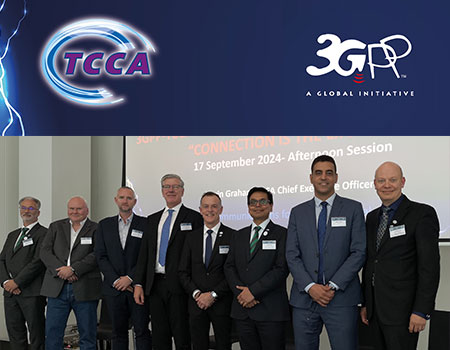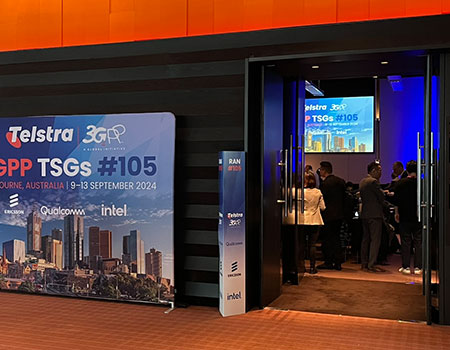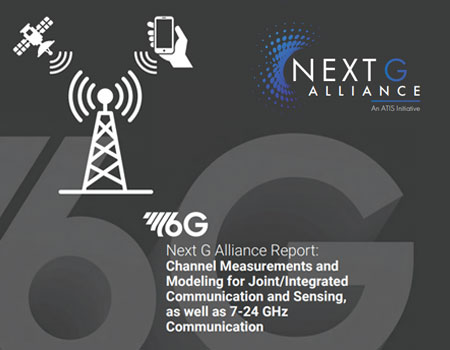Optimizing media and radio signal processing for 5G
March 20, 2018
With the approval of the first 5G NR specifications, the industry is now moving toward the development and deployment phases, where design objectives of the new systems have to be realized. Kyunghun Jung, the co-author of "Media and Radio Signal Processing for Mobile Communications" looks at these phases and at the need to identify where standards remain silent.
By Kyunghun Jung, former 3GPP SA4 Vice Chairman
As the work to develop media and radio signaling standards for 5G progresses toward the realization stage, experiences of developers and operators reveal opportunities for further refinement of the standards while still allowing differentiation of products and services.
As there are limitations on what can be specified in the standards, extracting maximum service quality and network capacity from new systems requires developers and operators to understand the media and radio signal processing operations of devices and networks, and locate the opportunities to innovate within the boundary of standards.
Although compression and transmission of media have been playing fundamental roles in 3GPP systems, signal processing operations previously not attempted, such as 360 media or transmission faster than conversational class, may impose unprecedented constraints. Newly introduced technical elements or system architectures can make well-proven approaches insufficient or unnecessary, and features that have been taken for granted may not be supported in new systems.
If we take lessons from history, in UMTS where video communications were introduced, management of quality and capacity by network, which had been perfected in GSM, could not work satisfactorily, and the responsibilities for recovering quality from transmission errors had to be shifted to terminals.
In LTE, massive use of the Internet technologies, as IP protocols connect codecs and modems, made information-theoretical approaches using joint source-channel coding framework obsolete. 3GPP rapporteurs of technical specifications often answer questions on these issues which they hope to have received earlier, before developments or deployments.
Optimization of media and radio signal processing may become more challenging in 5G and beyond as more elements originally not designed for mobile environments play key roles, and media compression and radio transmission techniques are already close to their theoretical limitations. Technical views and design approaches followed in the Stage-3 work of TSG SA WG 4, which integrates media codecs, radio access, and core network technologies into end-to-end multimedia services with guaranteed QoS, such as VoLTE, may help developers and operators overcome these issues when they implement new systems or increase the efficiency of existing ones.
Although in-depth analysis of network and protocol architectures, and their signal processing procedures, is essential in such optimization, it is important to note that some technical elements imported do not follow conventional practices of 3GPP. For example, typical video compression standards define only the decoder and bit-stream structures, leaving many opportunities for differentiating the encoder. Technical philosophy of the Internet community allows larger flexibility in the implementation and operation of their technologies. Moreover, contemporary design and construction of terminals place no less importance on new features such as being waterproof or wirelessly chargeable than on radio transmission and reception performance.
Although not as dynamic as in the operation of media codecs or radio access, session procedures via core networks such as the IMS have a profound influence on the optimization. In the development and deployment phases, and the advanced standardization phases of 5G in which new services are designed, these issues have to be carefully addressed.
About the author:
Kyunghun Jung is a former Vice Chairman of 3GPP SA4 and the rapporteur of 3G-324M and VoLTE specifications.
Further details of the views and approaches outlined above can be found in his book: Media and Radio Signal Processing for Mobile Communications, published in April 2018. In this book, he explains the evolution of network architectures and technical elements between generations up to and including 5G. He identifies the logical ranges where media and radio signal processing occur, and analyzes the procedures for capturing, compressing, transmitting, and presenting media, with implementation examples and data taken from commercially operational networks.
Read more about this new publication at http://www.cambridge.org/us/academic/subjects/engineering/communications-and-signal-processing/media-and-radio-signal-processing-mobile-communications?format=HB#SI4tgKPIAXihqGJR.97



 3GPP News
3GPP News




